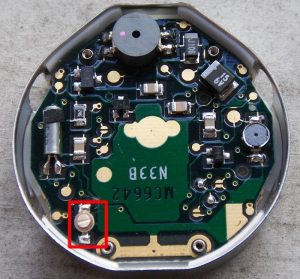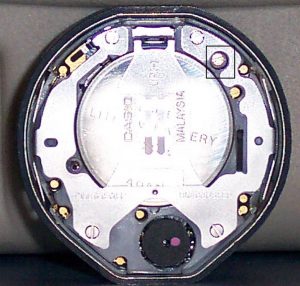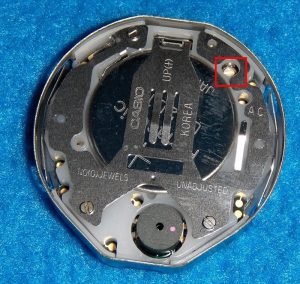My G Shock Time is Wrong
Adjusting the Accuracy of a G-Shock Watch
Welcome back to the help column, now before I answer the question, I need to warn you guys: do not do this unless your watch is out of warranty. These instructions WILL void your warranty, so do this at your own risk, or wait until it’s out of warranty first. Got that? Good, let’s get started, by asking WHY we want to adjust the watch in the first place.
See, a lot of watches, not just G-Shocks, tend to lag after a while (years usually). 5/10 seconds is ok, but it all adds up. If you want to save some money, and would rather not go to a jeweler, it’s up to you, so these instructions should help you make your watch great again!
Before we get started, there’s a few items that you’ll need.: A back removal tool (such as a screwdriver), a stopwatch, a notepad to record your results (or use a computer so you don’t have to worry about the paper running out), a well as a site with a completely accurate time. Something like timeanddate.com, which uses an atomic clock.
Alright, I want to warn you beforehand, this WILL take a while (and I mean days) in order to get the best result.
So we don’t get too confused, the watch you’re trying to set will be Watch A.
First, go into a site such as timeanddate.com and set the watch to the exact time (up to the second). Then you need to figure out, just how much the watch is lagging. To do this, look at the site and take out your stopwatch. Wait until the seconds end in a 0 (so for example 9:31.00. As soon as it hits 0, start your stopwatch and look at watch A. Stop the stopwatch when watch A hits (in this example) 9:31.05 and have a look at it.
Now then, say the stopwatch says 9:31:05.25. That means, when you take away the 5 seconds, your watch is faster than the atomic clock by 25 milliseconds. If the stopwatch said 9:31:04.80 then it’s slower by 20 milliseconds. Now, you’re going to have to do this a few times if you want to find the exact number, so make sure you’re writing it down!
Once you’re sure you have the exact time difference between your watch and the atomic clock, leave your watch for 24 hours. That guarantees the best results. Set an alarm on your phone to remind you if you have to. Alright, so you’ve had a good rest, it’s been 24 hours, what next?
Remember the 9:31 test? You need to do it again. So back onto the computer, wait until it’s 9:31:00, start the stopwatch and stop it when watch A reaches 9:31.05. Now, say this time the stopwatch says 9:31:05.95. Not only is your watch faster by 0.25ms, it’s now added a further 0.70ms. At this point it’ll definitely be helpful to write down yesterday’s result as well as today’s, or you’re going to get REALLY confused.
Remember, write the date and time when you did the test, for the most accurate results.
Now comes the complicated part. What, you thought the test was complicated? Well now you’re going to unscrew the back of the watch, and play around with the gears (hence why I said at the start, make SURE that it’s out of warranty!).
Now, obviously I can’t see your watch, so here are a few pictures of what a Casio’s insides should look like, and WHERE you need to poke around.



If you look closely, you’ll notice that the time screw is quite different from the one keeping the module from falling apart. Now, the good news here is, the screw is so distinctive, that if you look for it, you’ll be able to find it quickly, and there’s no need to take out the module.
Here’s where guesswork comes into play. You’ll need to either turn the screw clockwise or counterclockwise. Now, I’m not saying a huge turn, more like 1/16th to 1/32 of a turn. Wait 24 hours again, and perform the test again. If the watch gained any more time, then open it up again and turn the screw the other way. If it’s gotten better but not 100%, unscrew the watch again, and turn the screw a little more in the same direction. Keep doing that until the watch is as close to correct as possible (unless you’ve got lightning-like reflexes, you’ll never get the watch EXACT, but close enough means it’ll run smoothly for another few years. Just remember, for the best possible results, leave the watch for a few days, to a month. That way you’ll know just how much the watch is losing or gaining every month, and you’ll know how much to fiddle with the screw.
I hope you’ve found this helpful. Don’t forget to send me any questions. Until Next Time. Jimmy B





